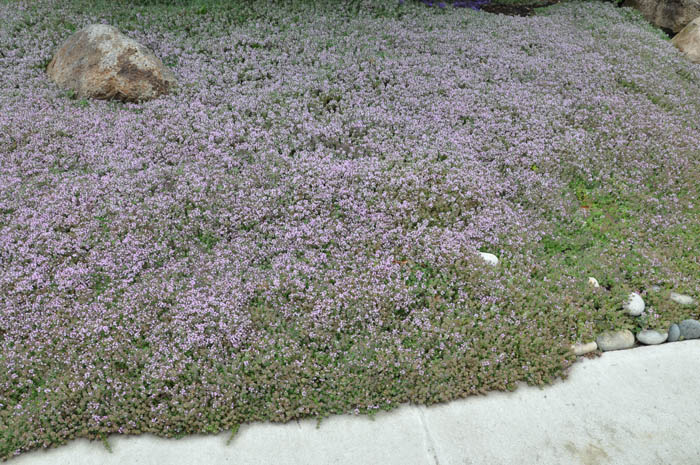Thymus 'Victor Reiter'
Victor Reiter Thyme

Description
This evergreen ground cover needs full sun to light shade. It grows to 3" tall, forming a dense, thick mat. It needs well-drained, light soil. This thyme is considered drought tolerant. The foliage is dark green and slightly hairy. It has a pleasant, minty fragrance when crushed, though not considered for culinary uses. Flowers are rosy pink and bloom in the summer. It attracts bees and butterflies.
Maintenance Tips
Thymus 'Victor Reiter' is a hybrid of the low-growing, creeping ground cover known as Red Thyme. This particular variety has been developed to have rosy pink flowers and is often referred to as the Reiters Red variety. It is not used for culinary purposes, but it makes an excellent ornamental ground cover. This is a very low-maintenance plant if it is planted in ideal conditions. It is drought tolerant and prefers full sun but can thrive in any soil condition. During the cooler, wetter months, the excess moisture can cause the plant to lose leaves and thin out. It is susceptible to root rot, mostly in the warmer months when people tend to overwater. If symptoms of root rot are present, stop watering and allow the soil to dry out. If the problem is killing off the plant, a systemic fungicide can be applied to treat the disease.
Plant Type
Ground cover, Perennial
Height Range
Under 1'
Flower Color
Pink, Red
Flower Season
Summer
Leaf Color
Dark Green
Bark Color
n/a
Fruit Color
n/a
Fruit Season
n/a
Sun
Full, Half
Water
Very Low
Growth Rate
Fast
Soil Type
Sandy, Loam
Soil Condition
Well-drained, Dry
Soil pH
Neutral
Adverse Factors
Attracts Bees
Design Styles
English Cottage, Formal, Japanese, Meadow, Mediterranean, Ranch, Seascape, Spanish, Woodland
Accenting Features
Fragrance, Specimen, Unusual Foliage
Seasonal Interest
Winter, Spring, Summer, Fall
Location Uses
Entry, Lawn, Parking Strip, Patio, Raised Planter, Walkways, With Rocks
Special Uses
Container, Erosion Control, Filler, Mass Planting, Lawn Substitute, Naturalizing
Attracts Wildlife
Butterflies
Water Saving Tip:
Group plants with similar watering needs in the same area.